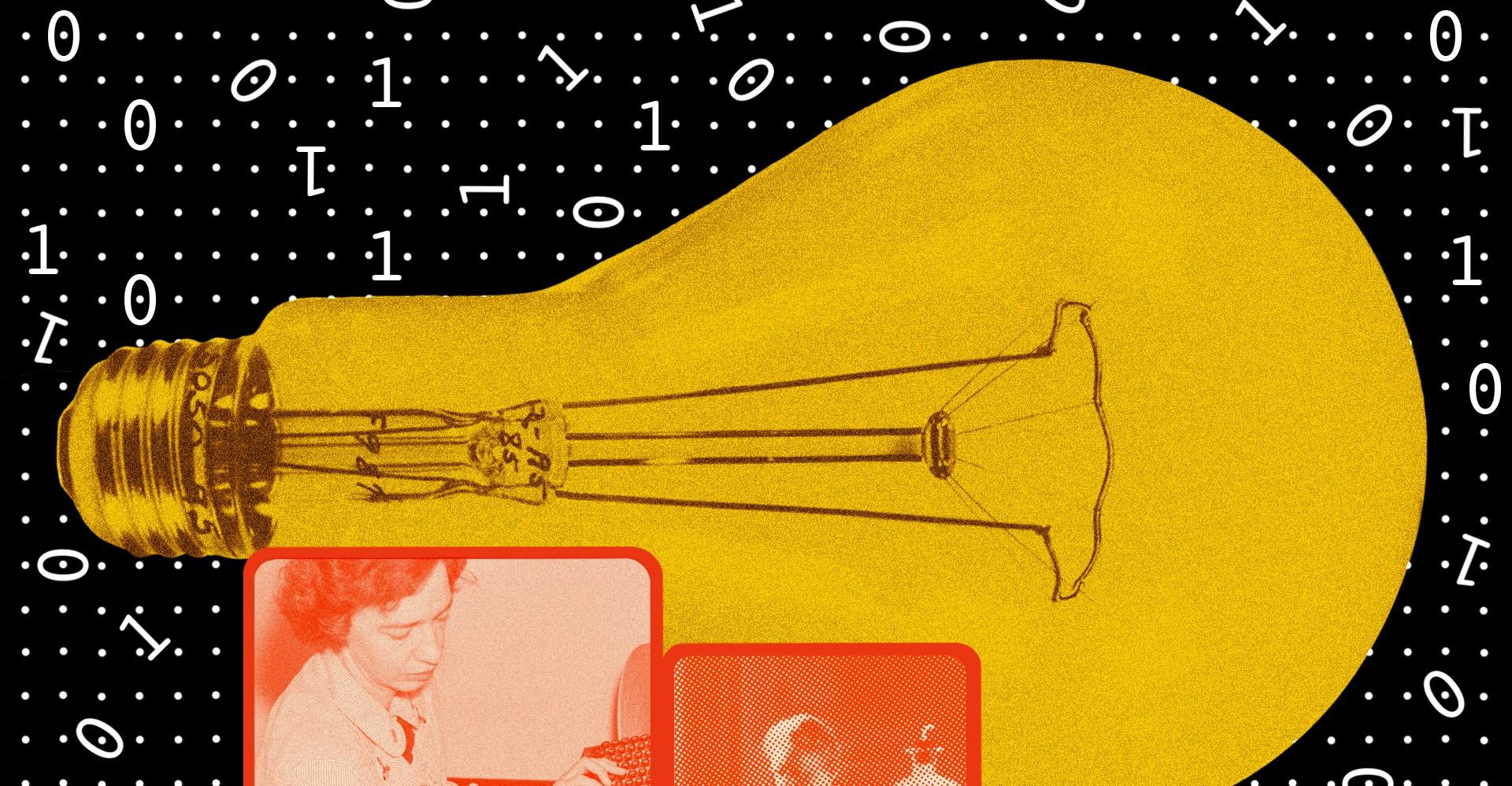The first game you play in The Making of Karateka, a release about the making of the cinematic action game Karateka, is an Asteroids clone. It may seem strange, but the attempt at recreating Asteroids was a seminal moment for Karateka creator Jordan Mechner, a humble beginning for a designer who would go on to create some of the most influential action games ever made, including Prince of Persia. The clone appears early on during a long, winding, and interactive timeline, which takes you through Mechner’s early days of experimentation before getting into how Karateka was developed and released.
For studio Digital Eclipse, the team behind the interactive documentary, it’s another attempt at telling the story of classic games in a way that’s completely native to the medium. As classic games become increasingly endangered, this approach is an important tool for keeping them alive. “I think it’s the best way to tell these stories,” says Digital Eclipse president Mike Mika. “If you’re going to tell the story of an interactive experience, it better be interactive.”
The studio made a name for itself over the years with thoughtful and detailed collections of retro games, ranging from Disney and Blizzard classics to the pixel art Teenage Mutant Ninja Turtles titles. These packages offered not only excellent ports of the games themselves but also robust galleries of bonus materials like concept art and magazine ads.
But last year, Digital Eclipse released something more ambitious: Atari 50, which took all of that material, put it on an interactive timeline, and used it to tell the story of Atari’s first five decades of existence. It was like a museum on your console, letting you pick and choose what you wanted to experience but giving you all of the context you needed to understand why these games were important.
The Making of Karateka is the first in a planned series of classic rereleases from Digital Eclipse — called the Gold Master Series — with the goal of telling more intimate stories about how formative games were made. According to the studio’s editorial director, Chris Kohler, work on the Karateka project actually started before Atari. When he joined the studio in 2020, Kohler realized that the wealth of material for Karateka created the possibility to do something different.
“I got in and was like, ‘I really want to blow this up,’” he explains. “Jordan Mechner just had so much content: the journals, the floppy disks, all of the papers that were scanned at the [Strong National Museum of Play]. We can tell a chronological story with all of this. You put this all together, it doesn’t have to be in a retro collection-style package, where you’ve got the games over here and the bonus materials over here. It can all just be chronological. Because the story itself is just fascinating.”
“People immediately picked up on the idea of going through the timeline, following the history.”
As the team was figuring out how to make that interactive timeline work, the Atari project came along. And because that had to be done on a much tighter timeline — it needed to be out for Atari’s 50th anniversary — it actually became the first to use the new timeline format. It was an experiment but also one that worked.
“The really important thing is that Atari 50 came out and people got it,” says Kohler. “There was no confusion. People immediately picked up on the idea of going through the timeline, following the history. And we had a lot of people commenting that ‘I wasn’t an Atari person, but after watching this video or reading why it was important, when I played it, it then had more of an impact on me because I had already understood the context.’ That gave us the confidence to continue to go forward with this type of format.”
But though it’s in the same format, The Making of Karateka was a different challenge for the team. Atari 50 presents a bird’s-eye view of an entire company over five decades, spanning from the arcades to home consoles like the Jaguar. It’s filled with smaller stories about individual games and hardware launches. The Making of Karateka, on the other hand, is a deep dive into the creation of one defining game, which in turn means it’s very much about a person: creator Jordan Mechner.
The game is divided into five chapters, and the first explores his beginnings, not just with the Asteroids clone but also with an early unreleased game called Deathbounce and his attempts to get it published. As you move through the timeline, you can read Mechner’s old journals and letters to his publisher, watch conversations between him and his father (who both composed the game’s music and served as a model for some of the animation), and play very early prototypes of the game. One of my favorite parts was watching a playthrough of the original retail version of Karateka with commentary on so I could listen to Mechner and his dad discuss all of the little details. (There’s also a video about how to pronounce the title, which it seems everyone gets wrong.)
“Ultimately you can’t control where people are going to go.”
As an example of how deep the documentary goes, there’s a whole chapter just on the animation. Karateka set itself apart because it used rotoscoping, a form of animation where artists trace over film of actual people to create frames. In The Making of Karateka, you can flip through Mechner’s early sketches, watch Super 8 videos of his dad running through a forest in a karate outfit for reference material, and even play around with a cool slider that lets you compare the original video and drawings with the final animated sprites.
And just like in Atari 50, you can explore each of these elements in whatever order you want. If you want to jump ahead and play the excellent new remastered version of Karateka first, you won’t be punished for it. And if you want to skip over the history of Deathbounce, that’s fine, too. The developers liken the timeline format to a museum exhibit, where there’s a chronology presented to you, but it’s not the only way to experience it.
“Some people will go into a museum and zip right through it, or they’ll see something that’s interesting and run right up to it, even though the museum has laid out the exhibit in a linear fashion,” explains Kohler. “Ultimately you can’t control where people are going to go. So you let them go wherever they want to and hope that they’re building their own journey.”
According to Kohler, the reason the studio could go into such depth with Karateka is that there was so much information available — something that isn’t the case with the majority of classic games.
“I’ve never seen a game with this much documentation.”
“Karateka really opened up the ability to do this because of the depth and exhaustive nature of Jordan Mechner’s archive,” he explains. “Because he saved all of his floppy disks, because he had hundreds if not thousands of pages of documentation, we were able to do this in a way that... I don’t know if we could do this for any single video game. I’ve never seen a game with this much documentation. Hopefully we can, because it’s so fulfilling to be able to tell that beginning-middle-end story of a single game.”
While nothing has been announced yet, future Gold Master Series releases could again try new formats. As opposed to being about a single game, like Karateka, they may explore the history of a genre or a franchise or a pivotal point in time. The timeline format allows Digital Eclipse to tell all kinds of different stories at different scales. The goal of the series is to turn the studio into something akin to a Criterion Collection for games, where fans know that if they see the Digital Eclipse name, the release must be important — even if they don’t really know what the game is.
“We’re hoping that some of these are eye-opening for people who have never heard of these games,” says Mika. “Some of the stuff we’ll be picking for the Gold Master Series isn’t necessarily a well-known game franchise or designer, but we feel like there’s a spotlight that person or that game deserves. That’s what the Gold Master Series is for.”
The Making of Karateka is available now on the PC, PlayStation, Nintendo Switch, and Xbox.



:format(webp)/cdn.vox-cdn.com/uploads/chorus_asset/file/24879354/Karateka_Timeline_02.png)
:format(webp)/cdn.vox-cdn.com/uploads/chorus_asset/file/24184725/ss_57538c7f175d5c416d400650e1be4ff89d5a966e.jpg)
:format(webp)/cdn.vox-cdn.com/uploads/chorus_asset/file/24879429/Rotoscope_Theater.png)
















